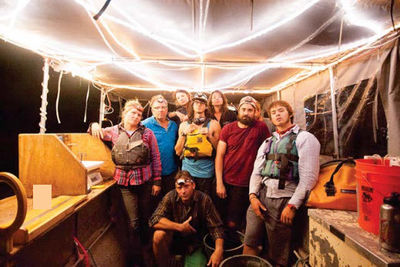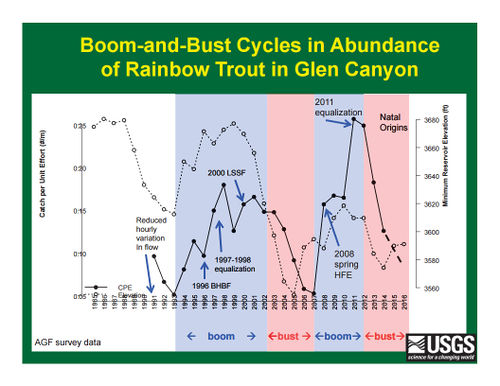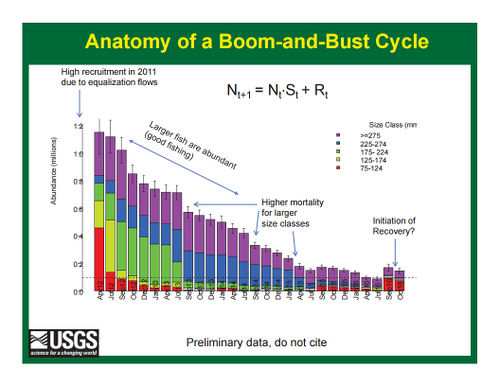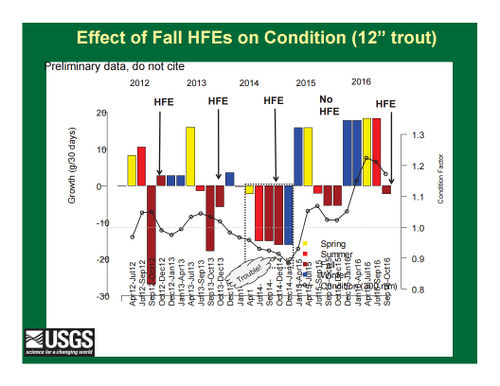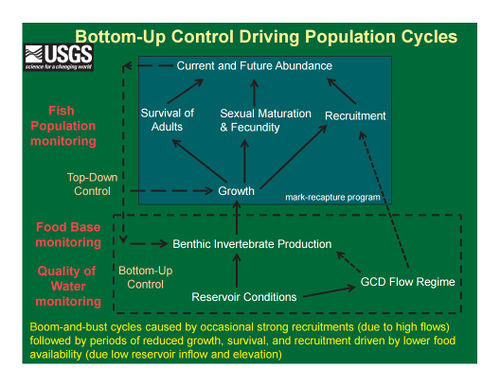Difference between revisions of "Bioenergetics Studies"
From Glen Canyon Dam AMP
Cellsworth (Talk | contribs) |
Cellsworth (Talk | contribs) |
||
| (One intermediate revision by the same user not shown) | |||
| Line 77: | Line 77: | ||
'''2020''' | '''2020''' | ||
| + | *[https://esajournals.onlinelibrary.wiley.com/doi/10.1002/bes2.1810 Korman et al., 2021, Controls on somatic growth and population dynamics of rainbow trout: Bulletin of the Ecological Society of America] | ||
| + | *[https://doi.org/10.1002/ecm.1427 Korman et al., 2020, Changes in prey, turbidity, and competition reduce somatic growth and cause the collapse of a fish population: Ecological Monographs ] | ||
*[https://www.usbr.gov/uc/progact/amp/twg/2020-01-13-twg-meeting/20200113-AnnualReportingMeeting-PredictionsPopulationsEnergeticConstraints-Presentation-508-UCRO.pdf Predictions, populations, and energetic constraints ] | *[https://www.usbr.gov/uc/progact/amp/twg/2020-01-13-twg-meeting/20200113-AnnualReportingMeeting-PredictionsPopulationsEnergeticConstraints-Presentation-508-UCRO.pdf Predictions, populations, and energetic constraints ] | ||
Latest revision as of 15:27, 23 February 2021
|
|
The interaction of fish, foodbase, and temperatureFish occupying warmer water have higher metabolic demands than individuals in cooler water, and if these demands increase concurrently with a seasonal decline in prey availability, then growth rates may be reduced. [1] |
| -- |
-- |
-- |
|---|
|
|
